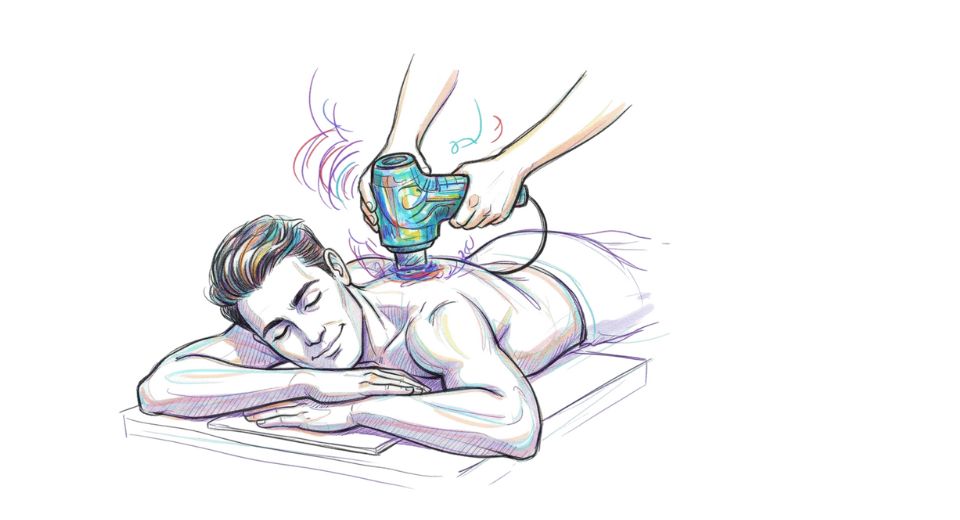
Oct 28, 2025

In a time when long days of sitting at one's workstation, repetitious strain and increasing stresses of life are so ubiquitously in view, the global electric massager market offered by Metastat Insight enters into households, workplaces and specialist well-being studios as an easy path to comfort and reinvigoration. From small gadgets providing neck strain relief after days of working from home to over-cushioned chairs for the restoration period after exercising, the market is expanding as clients seek to restore flexibility and comfort without having to step out. Value of this market is that it can potentially combine everyday distress with engaged care and its growing importance is emphasized by the roll-out of more in-home wellbeing solutions, greater public prominence of musculoskeletal health and continued roll-out of more intelligent, cost-effective massage solutions.
Market Context
Today, the need for Electric Massagers is being fueled by increasingly more problems: lifestyle of sedentary behavior, increased incidence of back and neck pain on a chronic level, and increased demand for wellness products to be ingested at home. Increasing numbers of individuals can no longer go to professional therapists as frequently owing to time, price, or access and are looking for product with therapeutic benefit that can stand alone. The market for Electric Massagers provides the solution: battery-powered or plug-in products that replicate therapy methods, provide targeted relief and become fixtures in daily life. The market is more applicable by providing wellness-concerned consumers as well as consumers with certain pain-relief requirements.
How It Works & Why It's Valuable
Basically, an Electric Massager uses mechanical stimulation vibration, percussion, air-compression or heat therapy to break up muscle tension, enhance circulation and aid in recovery. They come in every size and shape: hand-held for precise hot spots, cushions for chairs and sofas, full-body airbags and rollers in chairs, or even wearable wraps for legs and feet. The advantage is in tired muscles getting relief, stressed executives getting minutes of respite, and health-conscious consumers getting improved wellness at home. Benefit differentiators are the portability of the device, level of intensity in the user's hands, overall cordless design and blending the ancient skill of massage with contemporary styling. Providing personalized, convenient, in-home relief, this category is an enriching addition to personal-care regimes.
Growth Story & Technological Evolution
The Electric Massager industry is one of expansion from simple vibration pads and hand-rolled rollers to sophisticated, high-tech machines featuring app-based communication, body-scanning, and multi-modality.
Early consumers employed hand-held machines for the first time; full-massager massage chairs and integrated systems followed well-studied arrivals in homes and clinics. Highlights are the presence of Bluetooth-enabled devices, firmware updation being employed in providing adaptive massage programs, and collaboration between consumer electronics companies and wellness professionals. Some products now employ AI to personalize patterns on the basis of feedback or even include wearables. These developments have validated market positioning of new price-points, greater demand, and more end-use segments.
Regional & Global Trends
Electric Massager penetration is strongest in North America, with the highest disposable incomes, higher wellness awareness and improved access to e-commerce driving demand. Europe is second, with robust regulatory frameworks for healthcare-sensing products and increasing numbers of home-wellness shoppers. Urbanization, middle-class consumer expenditure and cultural acceptability for massage therapy are driving adoption in the Asia-Pacific. Niche segments like Latin America and the Middle East are picking up with expanding infrastructure and the expanding digitalization of retailers. These emerging markets are radiant with consumers looking for self-care options that were earlier only accessible in the premium segments.
Challenges and Opportunities
Among the challenges requested in the Electric Massager business are high-end product price, competition from traditional therapy practices, consumer disenchantment in product claims, and regulatory issues with the promotion of devices as wellness or therapy devices. On the other hand, there are ample opportunities: tele-wellness and remote physiotherapy growth offers a chance to anchor devices to health platforms; advancements in material science (lighter and stronger devices) increase accessibility; integration with fitness, rehab or elder-care sectors opens new avenues; and direct-to-consumer models lower barriers to entry for first-time clients. Merging wellness, technology and lifestyle design, the market is ready for even more convergence.
Why It Matters Now
With growing emphasis on individual well-being, green self-care and the home wellness trend, Metastat Insight electric massager market becomes particularly worthy of attention. With people making ease, mobility and recovery their top priorities particularly in a post-pandemic environment of hybrid work and increased stress such products are an exemplary intersection of healthcare and technology. The ability to incorporate massage therapy into one's life, in an easy and independent way, is what positions this market as an enabler of healthier living and preventive care in a fundamental way. At its core, the electric massager market is not just providing comfort today it's setting itself up for how well-being will be accomplished in residences around the world tomorrow.
Drop us an email at:
Call us on:
+1 5186502376
+91 73850 57479